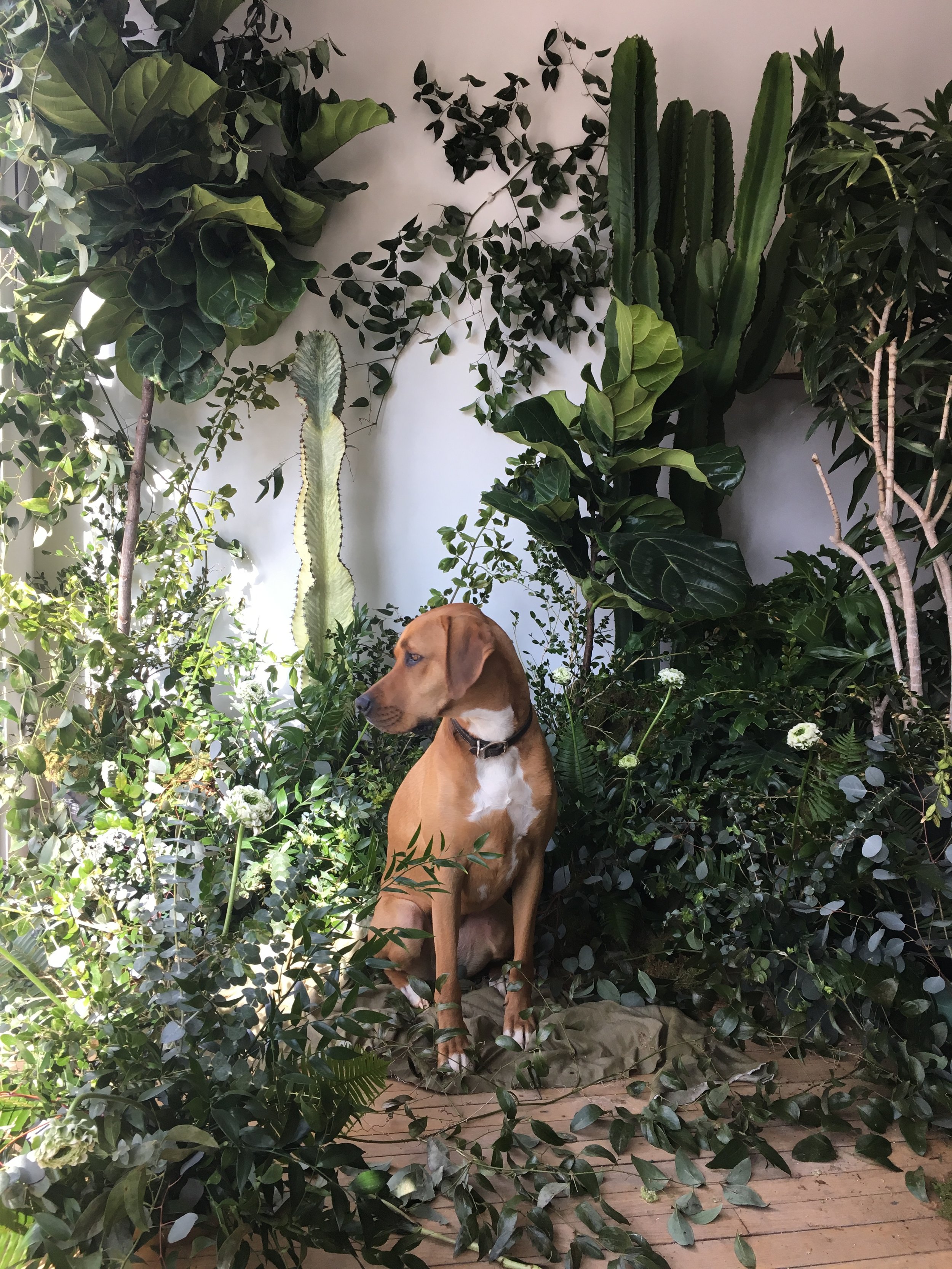Plants & Pets: It’s a Balancing Act
Anyone who has had both plants and pets at the same time knows this tale: you come home from a long day of work only to find multiple plants knocked over, out of their planters, with potting mix covering the floor. Your pet is mysteriously nowhere to be found when you walk in. Sound familiar?
It’s never malicious or out of spite—it’s just a fact of nature. Your pets are ancestors of animals who interacted with their outdoor environment, plants included. But how do you—as both a plant parent and pet parent—manage the two? We’ve compiled some of our favorite tips and display methods for keeping your pets out of your plants.
Understand what your pet gravitates to
Every pet is unique and what plants your pet might like to get into might be different than what other pets like to get into. Maybe your pet loves leafy, tropical plants that they can gnaw on easily, or maybe they like the thicker things in life and want to munch on some water-filled leaves of succulent plants.
Understanding which plants your pet wants to get into can help inform you on which ones are safe to keep out on the ground and which ones are better suited placed somewhere out of reach. For instance, if your pet doesn’t seem to register the many different types of Sansevierias as plants, you’re probably safe to place those out on the floor with minimal interference.
Group plants together on shelves
If you have a pet who’s a known jumper (we’re looking at you, cats), grouping and clustering plants together on a shelf is a great way to avoid giving your pet a landing pad and keeping your plants safe from getting knocked over. It’s also one of the most low-effort ways to boost the humidity levels around your plants.
Mounting plants on cork
Unless your pet is able to climb walls, this one’s practically foolproof. Mounting any kind of epiphytic plant onto a piece of cork bark with sphagnum moss and fishing line is an easy way to create a beautiful plant display, and it is also something your pet likely won’t be able to reach, since they are made to hang directly on a wall. Epiphytic plants like Hoyas, Peperomias, and others are also non-toxic for pets in the event they do get to them.
Hanging planters
Investing in a small handful of hanging planters for your trailing or vining-type plants is another foolproof way to keep them out of reach from any curious pets.
We love putting hanging planters close to windows to create living curtains of lush vines and succulent stems. When your plants start to grow closer to the floor, keep them pruned to a certain size to prevent any unwanted attention from your pet. Pruning will also keep your hanging plants looking their fullest.
Large rocks on top of the potting mix
If you have a pet who loves getting into the potting mix of a particular plant, keeping them out can be as simple as adding decorative river rocks or large stones to the top of your potting mix—it keeps the soil in and the paws out.
Make sure to choose larger rocks to allow for more air flow directly to the potting mix. Try to source rocks that are roughly the size of a hand and place them around the top. Using too small rocks makes it harder for air to reach the soil and can cause the potting mix to stay too wet for too long.
Utilize heavier ceramic planters
Choosing heavier ceramic planters for your plants keeps them held in place and less likely to be knocked over by any overactive tails or unintentional bumping. Plastic planters don’t weigh a ton, even with water weight added, but stoneware and high-fired ceramics will take a little more effort to slide off a shelf or fall over.
Similarly, choosing planters like straight cylinders that have a better center of gravity can also help prevent them from getting knocked over. Forms like egg-shaped planters or planters that taper slightly can get knocked off balance easier than other shapes. The planters we stock from Burley Clay are aptly named—they’re heavy and robust, and they won’t be getting knocked down anytime soon by your pet at home.
Words by: Egan Thorne
Photos by: Egan Thorne, Emiy Kellett, & Collin Foltz



